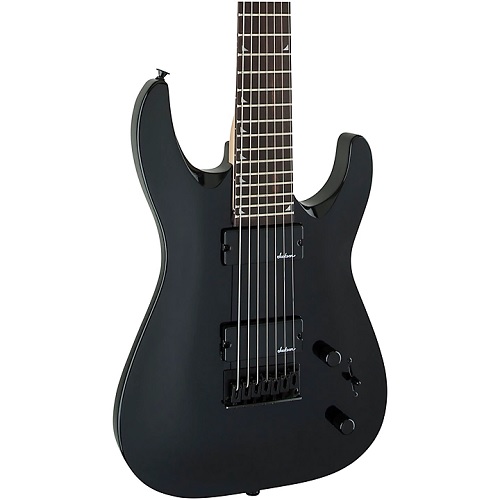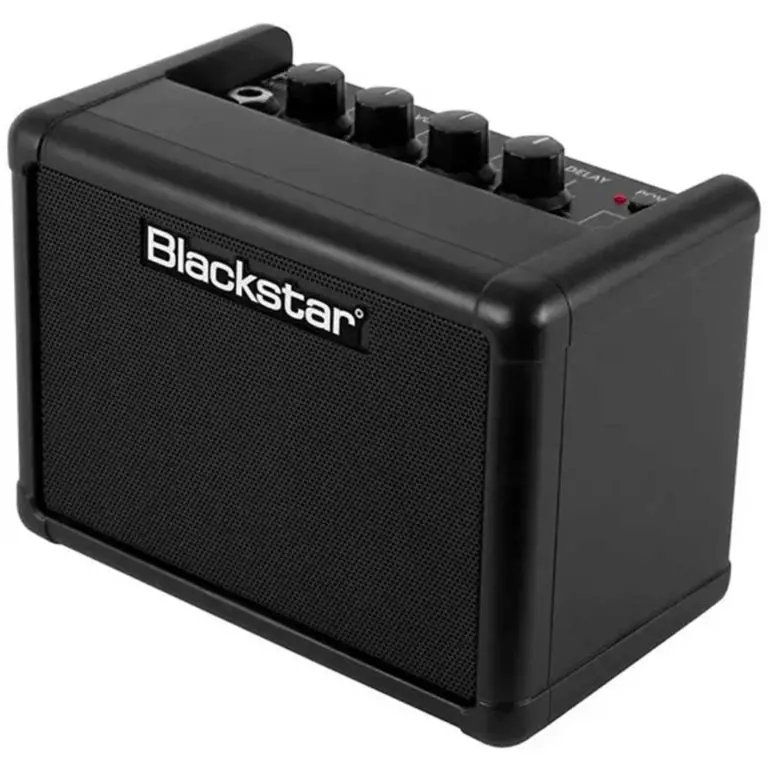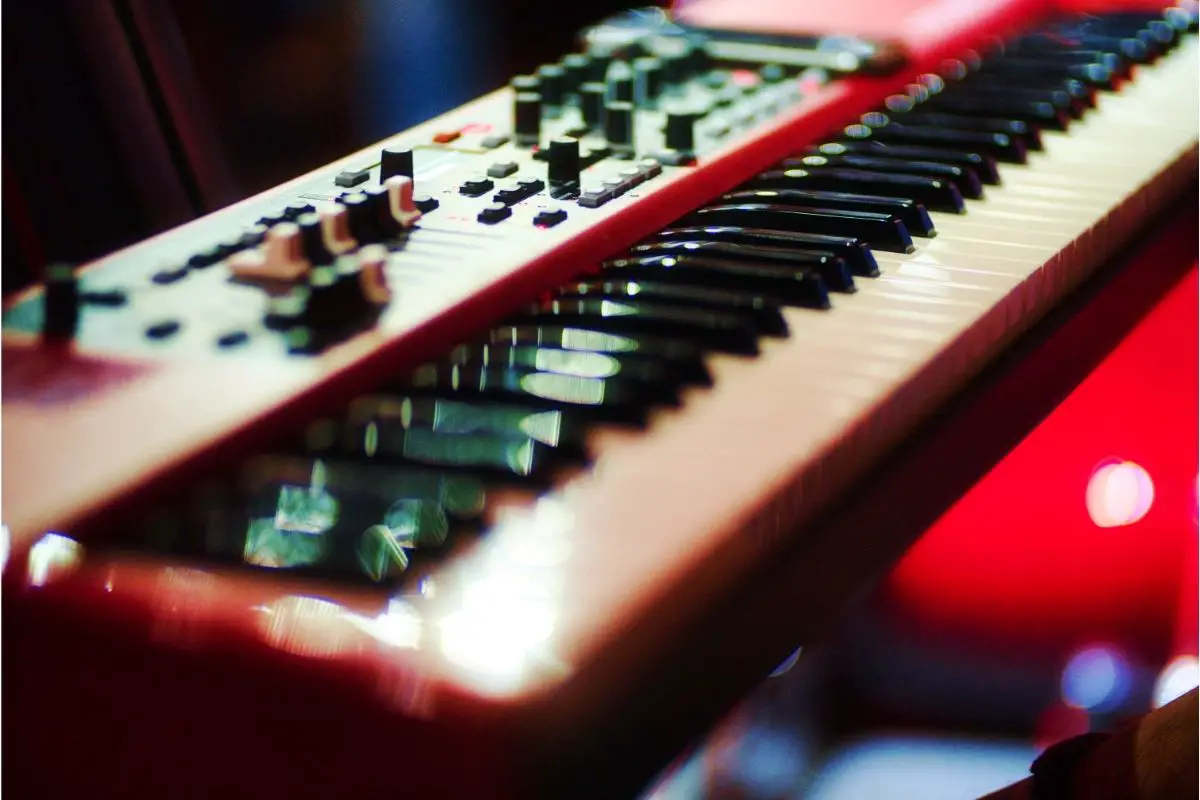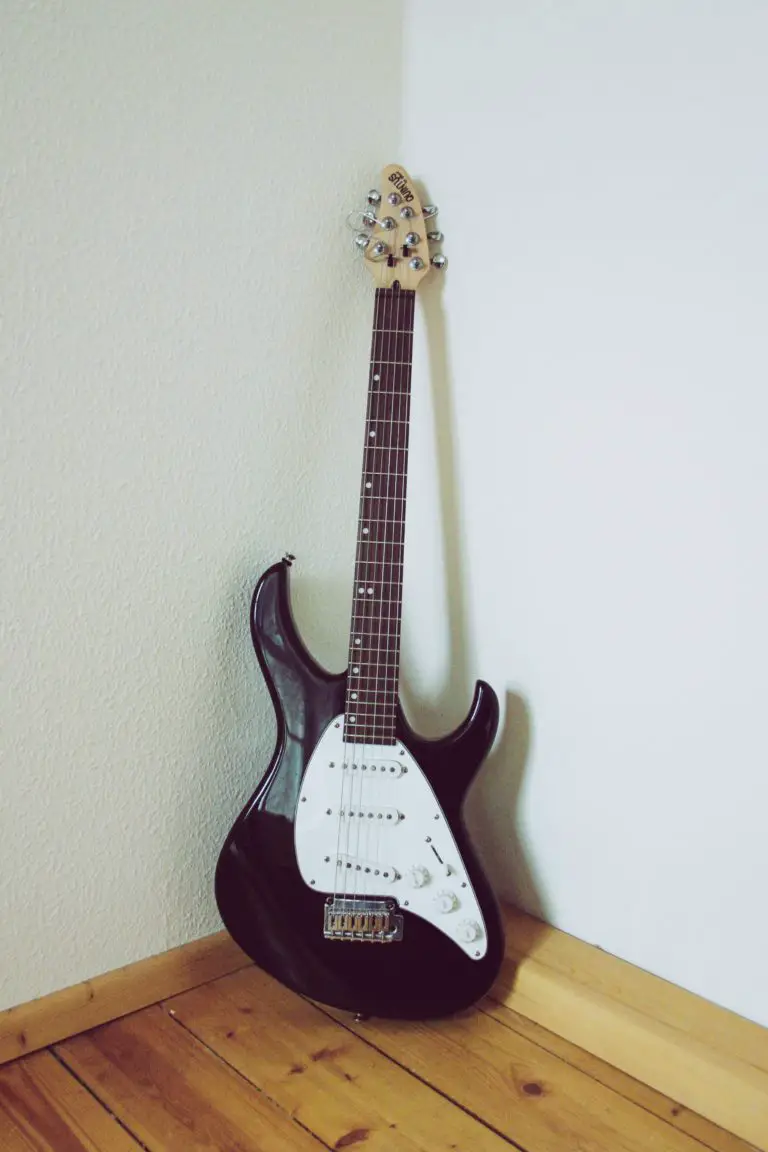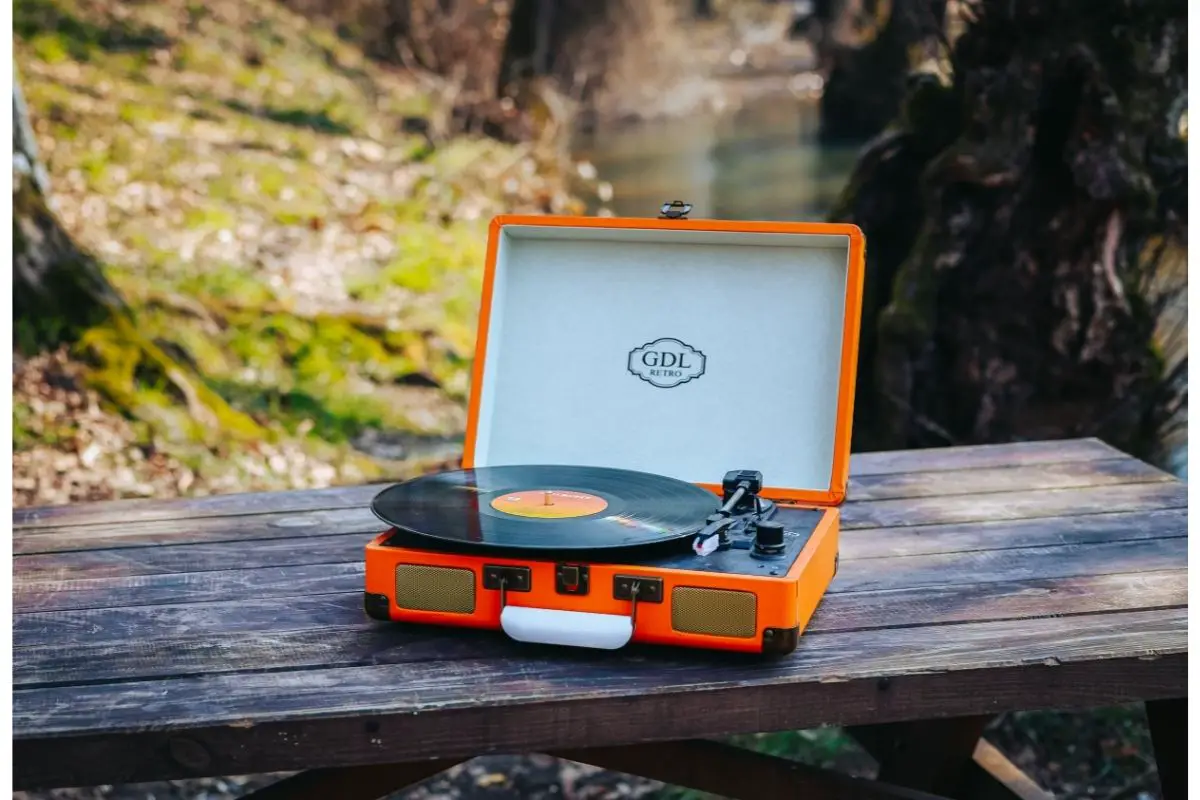Best Acoustic-Electric Guitar Under $500
Have you been playing the acoustic guitar for years and feel its time for a change? Are you a beginner guitarist who loves the acoustic but wants a little more freedom and versatility?
There are few things in life more pleasant than hearing the vibrant ring of a calm, acoustic melody or the distinctive rhythmic power of acoustic blues. Sometimes, though, you can be left wanting more.
If you’ve ever thought your playing would sound better amplified, there’s a good chance you’ve been put off buying an external microphone.
Set-ups can be complicated (and impractical if you’re short on space). Plus, if you’re just jamming at home, the investment can seem a little overboard.
If you want to find the perfect middle-ground or sweet spot, why not consider an acoustic-electric guitar?
The electro-acoustic guitar boasts an ingenious design that maintains the traditional acoustic function. However, you can amplfy it without an external microphone.
If you’re unsure where to get started, we’ve put together this guide of the best acoustic-electric guitars under $500. There’s a design and price tag to suit every player, so sit back, relax, and look through our roundup.
Best Acoustic-Electric Guitar (Summary)
Gretsch G9520E Gin Rickey
- Basswood body with X-bracing
- 12th fret, 24”-scale nato set neck with 12” radius walnut fingerboard
- Gretsch Deltoluxe soundhole pickup with gold/white rosette rings
- 1950s-style vintage open-gear die-cast tuning machines and vintage end-pin strap buttons
- Available in Smokestack Black with aged white binding and nickel hardware
First on our list is the Gretsch G9520E Gin Rickey Acoustic-Electric guitar. This model comes with a basswood back and body, a walnut fretboard, and nickel strings.
With a scale length of 24 inches, this guitar’s dimensions are suitable for both beginners and experienced players.
This is a ¾ size parlor guitar, meaning it’s smaller than your standard electro-acoustic. However, it’s still suitable for both adults and children, and in terms of appearance, it’s reminiscent of a 1930s model. The pickups and finish make this the perfect guitar for playing blues or rock.
This parlor-sized guitar is comfortable to play, especially for small hands. It has 18 frets, and its neck is comfortable to hold.
It’s beautiful to look at. Its open-gear diecast machine heats, Pearloid dot fretboard inlays, and walnut fretboard give this guitar an expensive appearance.
The Gretsch G9520E also has a smooth, clean tone. With an electro-acoustic, you’ll want it to sound just as good plugged in as it does unplugged. That’s exactly what you get.
Unfortunately, there are no knobs on the guitar, so you’ll control tone and sound directly through your amp.
Pros
- ¾ Parlor Size: This is ideal for players with small hands or those that want a ‘grab and go’ guitar.
- Beautiful Pickups: The pickups are clean and diverse, and when the short one is attached to an amplifier, you’ll get a distinctive blues sound.
Cons
- No Controls on the Guitar: The Gretsch G9520E has no controls on the guitar. You’ll need to tweak the tone and sound directly from your amp.
Gear4Music Dreadnought Electro Acoustic Guitar
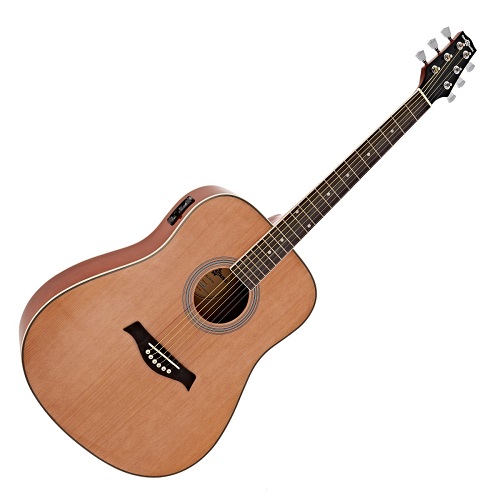
Gear4Music creates high-quality, low-budget instruments. This Dreadnought electro-acoustic guitar is no exception. So if you’re a beginner player looking for your first model, this is a must-have.
Dreadnoughts have a deeper body than your standard concert guitar. This can deliver more vibrant tones, a fuller sound, and increased sustain.
It has a stunning low-end response and a great midrange. This makes it ideal for playing a broad range of musical styles.
This dreadnought electro-acoustic also has a two-band equalizer which makes changing the tone, bass, and treble efficient and straightforward.
This guitar even comes with a built-in tuner, so you won’t have to worry about sourcing a separate one. Its cutaway body also makes for a comfortable playing experience, whether you’re sitting or standing.
This guitar also has incredible build quality. This Dreadnought is built from premium wood, including a spruce top and sapele mahogany body and neck. These woods aren’t just great for aesthetic appeal, but they also give the guitar a beautiful tone.
This dreadnought is a standard-size guitar, so you’ll get 21 frets and an overall body length of 1050mm.
Although this guitar suits a range of styles, the bass is a little intense. It’s hard to strike the perfect balance with the guitar’s controls. You may need to lean more on your amp for support here.
Pros
- Diverse Tone: This guitar has a bold and vibrant tone, which is suitable for a range of musical styles.
- Built-In Tuner: The built-in tuner is a nice little extra which works well and is ideal for beginners and experienced players alike.
Cons
- Temperamental Bass: Unfortunately, the bass controls on the guitar can be intense and hard to strike a balance with. You may need a reliable amp to get the right tone.
Tanglewood TWR2 DCE Roadster II

Next up, we have the Tanglewood TWR2 DCE. This electro-acoustic boasts a classic, cutaway design and resonant mahogany for its back and sides.
When you play this guitar, you’ll notice it has a distinctive, warm ring. This tone makes it suitable for playing a range of styles. Unsurprisingly, this sounds just as good unplugged as it does plugged in.
The fretboard is it stunning to look at. Also, its eboncore design adds a surprising amount of tonal brightness to its sound.
We also loved the guitar’s 4-band EQ section, which gives players an enviable amount of control over the sound. Like the Gear4Music model, this guitar also comes with a built-in tuner. This is great for beginners, experienced players, and those who wish to play live.
The only downside we found to this guitar was its amp tone. This electro-acoustic guitar’s sound system works wonderfully when used with a Tanglewood amplifier. However, the sound quality can be hit and miss with other amps.
For the best results, use this guitar with a Tanglewood amp only.
Pros
- High-Quality Build: This guitar is incredibly well built and feels more expensive than it is.
- 4-Band EQ Section: This gives players a beautiful amount of control over the tone of the Tanglewood.
Cons
- Temperamental Amp Tone: Unfortunately, the tone of this guitar only seems to sound at its best when used with a Tanglewood amp. Other amplifiers may not produce the best results.
Ibanez Performance Series Mahogany Dreadnought
- Body Body type: Dreadnought Cutaway: Single Top wood: Mahogany Back & sides: Mahogany Bracing pattern: Info not available Body finish: Open Pore Orientation: Right handed Neck Neck shape: Info not available Nut width: 1.69 in. (43 mm) Fingerboard: Rosewood Neck wood: Mahogany Scale length: 25.6 in. Number of frets: 20 Neck finish: Open Pore Electronics Pickup/preamp:
- The PF12MHCE is a cutaway dreadnought body style acoustic with mahogany top, back and sides for a warm, full tone
- While the open pore natural finish adds to the guitars natural, subtle aesthetics, it also contributes to the sound of the instrument
- Electronics include the Ibanez under-saddle pickup and the Ibanez AEQ2T preamp with built-in tuner
- The PF12MHCE also features a tortoise rosette, rosewood fretboard and bridge with Ibanez Advantage bridge pins for improved tuning stability
Now it’s time to look at a familiar name with the Ibanez Performance Series Mahogany Dreadnought.
Straight out the box, you’ll notice this electro-acoustic guitar has a distinctive stained appearance. With a mahogany top, back and sides, the Ibanez has a warm tone that suits a range of musical styles.
The natural finish of the guitar has a rosewood fretboard and bridge. You also get Ibanez Advantage bridge pins for more reliable tuning stability.
We loved the built-in tone and tuning controls when we tested this guitar. You can control the bass, treble, and volume directly from the guitar. Its built-in tuner is reliable, quick, and efficient.
The mahogany scale includes 20 frets, with a mahogany scale and a neck length of 25.6 inches.
Overall, this is a great guitar for everyday jamming. It holds a tune and electronics are reliable and well-built. However, we found that the frets further up the neck are a little dull compared to the lower ones.
Pros
- Bright, Clean Tone: This makes this guitar perfect for those wanting to play a range of musical styles.
- Built-in Tuner and Controls: This means you don’t have to rely on your amp to change your guitar’s tone – you can do it all directly from your guitar.
Cons
- Dull Frets: Unfortunately, we found that the frets higher up the guitar were duller than the lower ones. This could be an issue with the build quality of a one-off bad experience; however, these frets can be made clearer by adjusting the bass and treble options on the guitar.
Ovation CE44P-SM Acoustic-Electric Guitar
- Classic mid-depth Lyrachord cutaway body with a stunning splatted maple top featuring the Elite multi-sound hole design, which provides clear highs and focused, balanced bass response
- Remarkable new scalloped “X” bracing design that borrows from the past and is voiced for the present, with natural tone and optimal response and power
- Together, body, top and sound holes create the classic Ovation Elite sound, resonating with full projection, remarkable note clarity and balance, and nuanced tonal complexity
- The top also has elegant multi-wood epaulets, black binding, abalone purfling and a beautiful Natural gloss finish
- For great live sound, the CE44P-SM features an Ovation Slim line pickup and OP-4BT preamp system with three-band EQ, volume/gain control, onboard tuner and low-battery light
Last on our list is the Ovation CE44P-SM acoustic-electric guitar. Ovation may not be one of the biggest names in the game. However, one look at this guitar will tell you exactly why they should be.
The ovation acoustic-electric has a classic, cutaway body and a beautiful maple top with a unique, multi-sound hole design.
Arguably, this is the best feature of the Ovation electro-acoustic. It provides some enviably clear high tones and perfectly balanced bass response.
The Ovation is a ¾ size guitar, which will be easy for beginners and players with small hands to use. What we loved the most about this guitar was its tonal clarity and unbelievable sustain.
Whether you’re sitting or standing, the Lyrachord mid-depth body provides excellent projection. So this guitar is great for both at-home jams or live performances.
This guitar also features a three-band EQ with volume and gain control, an onboard tuner, and a low-battery light. This makes it easier than ever to get your sound just the way you want it.
Although this guitar has a bright tone, it’s better suited to blues or rock music than other musical styles. With the right amp, you may make this tone a little more diverse.
Pros
- Three-Band EQ: You can control the tone directly from your guitar, so you won’t have to rely so much on your amp.
- Multi-Sound Hole Design: This gives the Ovation a unique, distinctive appearance and a warm, full tone.
Cons
- Lack of Tonal Diversity: This guitar may be best suited to rock or blues players. If you want to play more musical styles, you may need to adjust your amp a bit more.
Buyers Guide
Now we’ve taken you through some of the best electro-acoustic guitars on the market, it’s time for you to find out what you should look for in your next big buy.
Before you head off to the store to make a purchase, take a thorough look through our buyer’s guide, and get to grips with all you need to look for in a quality, electro-acoustic guitar.
Electro-Acoustic Pickups
Pickups are devices that capture the vibrations of your guitar strings and turn them into electrical signals.
There are three main types of pickups used on electro-acoustic guitars. These are:
Microphone
Yes, this is exactly what you think it is – a small microphone fitted inside your guitar. A microphone pickup serves the same function as placing a microphone in front of your guitar. However, placing the mic can sometimes increase the risk of feedback.
Piezo
You’ll usually find a piezo pickup between the saddle and the bridge of your guitar.
A piezo pickup can register the vibrations of your strings; this then changes the voltage of the piezoelectric material of your pickups and feeds it through the cable into your guitar’s preamp.
These pickups usually create distinct, clear sounds.
Magnetic Soundhole
A magnetic soundhole has the same design as an electric guitar’s pickups. However, they’re balanced to produce a flat EQ. These are often in the soundhole of an acoustic guitar, and they’re pretty hard to miss.
Onboard Controls
These days, most electro-acoustic have onboard controls. These are usually at the top of the guitar in a black panel. Your onboard controls will usually comprise the following settings:
- Bass
- Volume
- Treble
- Built-in Tuner
Do I Need Onboard Controls?
The simple answer is no; onboard controls aren’t always necessary. However, without them, you’ll have to rely on your amplifier to alter the sound and tone of your guitar.
Live players often prefer onboard controls because they’re a more convenient and efficient method to tweaking with amplifier controls.
Onboard controls also give you more tonal control than working with an amp alone. If you want to create a more distinctive sound or play around to find the right ‘voice,’ you’ll benefit from onboard controls.
Onboard controls are pretty commonplace on modern electro-acoustic guitars. In fact, you’ll be hard-pressed to find a guitar without them.
Electro-Acoustic vs. Acoustic
If you already own an acoustic guitar, you may wonder: do I really need an electro-acoustic model? What’s the difference, and will I benefit from owning one?
An electro-acoustic guitar is an acoustic guitar with a pickup system and amplification capabilities. Unlike acoustic guitars, you can plug your electro-acoustic directly into an amplifier and project its sound further.
For example, if you’re a seasoned acoustic guitarist who plays live, you may prefer to use an electro-acoustic. These are easier to set up and can often project their sound much further than acoustic setups.
Electro-acoustic guitars don’t have to be played with an amp. Instead, they sound just as good plugged in as they do unplugged so that you won’t compromise on sound or quality.
We think electro-acoustic guitars are an excellent investment for any guitar player. They offer far more versatility thanks to their onboard pickups, but you’ll still get all the classic acoustic qualities you expect.
If you’re a beginner who’s thinking of playing live or advancing your style one day, an electro-acoustic guitar is a worthwhile investment.
Final Thoughts
Whether you’re purchasing a new pair of shoes, a flat-screen TV, or a new guitar, we all want to prioritize quality and know our investments are worthwhile.
If you’re buying a new guitar, you might think that those lower down the price range may compromise on build quality and tone, but this isn’t always true.
As long as you’re sure you’re buying from a reputable seller and you’ve done your research, it’s possible to find low-budget, high-quality guitars that will last you years – just like our selection of the best acoustic-electric guitars.
You don’t have to break the bank to get a high-quality instrument, and if you’ve taken the time to check out our product roundup, you’ll see that even some of the biggest names in the industry can produce high-quality builds for cheaper than you’d expect.
So, don’t let your budget hold you back from getting the electro-acoustic guitar of your dreams!
FAQ’s
Can You Play An Electric Acoustic Guitar Like An Acoustic?
Yes. Although electro-acoustic guitars can be amplified, they don’t have to be. Your electro-acoustic will sound just the same as any other acoustic model when unplugged.
Is It Worth Getting An Electro-Acoustic Guitar?
If you want to play live music or have the option to amplify your sound, it’s worth getting an electro-acoustic. Their added versatility makes them a brilliant investment for players of all ages and abilities.
What’s The Difference Between Acoustic And Electro-Acoustic Guitar?
Electro-acoustic guitars and acoustic guitars have an almost identical appearance and sound. The only difference is that electro-acoustic guitars have built-in pickups and preamps to amplify your sound.
For example, if you wanted to amplify a regular acoustic guitar, you’d have to position an external microphone in front of it.






